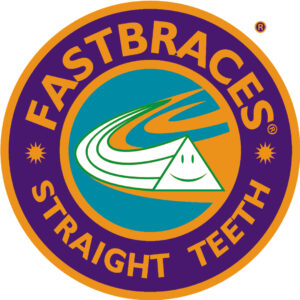FASTBRACES® Technology
What is FASTBRACES® Technology and what are its benefits?
Schedule ConsultationWhat is FASTBRACES® Technology and what are its benefits?
 The first question that concerns young and older patients when they enter the orthodontic treatment process is typically “When will I get my braces off?”. This question alone created, for many years, a negative feeling and an adverse psychology for the patient. This is because, in the past, it was considered a given that orthodontic treatment would last two to three years, or even longer. So, if someone told you that it is now possible for orthodontic treatment to be completed in a very short time, in many cases even in about 100 days, would you believe it? -probably not. And, if you did believe it, you would expect a very difficult experience with pain and agony, which is a natural assumption. But how is it possible that an orthodontic treatment that used to last two or more years can now finish in a much shorter time and relatively painlessly?
The first question that concerns young and older patients when they enter the orthodontic treatment process is typically “When will I get my braces off?”. This question alone created, for many years, a negative feeling and an adverse psychology for the patient. This is because, in the past, it was considered a given that orthodontic treatment would last two to three years, or even longer. So, if someone told you that it is now possible for orthodontic treatment to be completed in a very short time, in many cases even in about 100 days, would you believe it? -probably not. And, if you did believe it, you would expect a very difficult experience with pain and agony, which is a natural assumption. But how is it possible that an orthodontic treatment that used to last two or more years can now finish in a much shorter time and relatively painlessly?
Treatment processes of the body do not normally last for years. A wound, for example, takes a few days to heal and a broken leg’s healing time does not exceed sixty to ninety days. In tooth movement, the alveolar bone is broken down and rebuilt. This remodeling function can be considered analogous to the deconstruction (breaking) and reconstruction of a leg. Likewise, the human body will indicate how much time it needs to move the teeth to their correct position.
So, what is the natural process of moving teeth? It’s called tooth eruption and it is the process that takes place from the moment a tooth appears in the mouth until it takes its final position in the dental arch, which occurs when we are young and usually takes about 120 days. Is there any cutting-edge technology that can cause the same type of movement in a time proportional to the natural eruption of teeth in children? Well, this technology not only exists, but has also been perfected over the past 30 years…
Invented and founded by American orthodontist, Dr. Anthony Viazis in Dallas, Texas, the patented Fastbraces® technology is providing products that help dentists in over 50 countries straighten teeth safely, easily and remarkably fast, even in about 100 days. Tested in vitro (in the laboratory) and in vivo (on patients) by universities in the 1990s, the high-performing orthodontic bracket methods and systems of the patented Fastbraces® technology upright the roots of the teeth towards their final position from the onset of therapy with a single archwire. This process is known as “orthoeruption” (orthodontic movement comparable to the natural eruption of teeth) and it’s a patented method that restores the natural alveolar bone morphology as if the teeth achieved their straight position naturally and, as a result, tooth extractions or sometimes even jaw surgery can now be avoided. Even spaces for implants can now be ready even in about 100 days, something which is very useful in restorative dentistry.
In addition, as the Fastbraces® Technologies’ high-performance patented braces and methods help reestablish the natural alveolar bone morphology with straight teeth, bacteria can no longer accumulate in the uneven bone around the crooked teeth. Malaligned teeth have always been difficult to clean, and the aggressive bacteria associated with them (such as Treponema denticola and Fusobacterium nucleatum) are a constant threat to the overall health of an individual. Potential systemic manifestations from these bacteria in the mouth include, but are not limited to, Alzheimer’s, cardiovascular disease, diabetes, colorectal cancer and respiratory tract infection. Fastbraces® technology now makes it possible for hygienists and dentists to treat the stubborn form of gingivitis prevalent around crooked teeth after quickly straightening them, even in sixty to ninety days, which means that the business of dental hygiene used to be just cleaning teeth, but no more; dentists can now evaluate their patients for orthodontic treatment at the hygiene visit and straighten their teeth in their own dental office.
